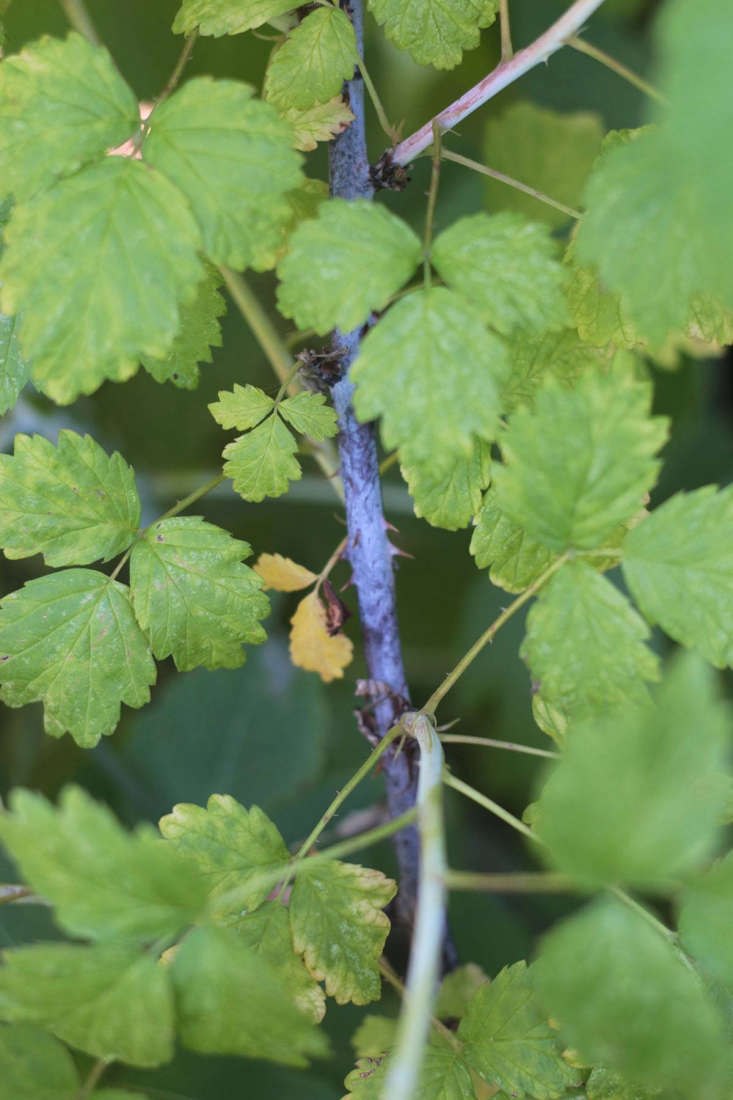My first encounter with black raspberries—native to eastern North America—was at farmers’ market in Sante Fe one summer, years ago. I was stopped in my tracks by blue boxes filled with unfamiliar and dark powdery berries, like miniature red raspberries. I exclaimed brightly to the farmer who sat hunched and scowling behind his crop. Purple storm clouds and the smell of ozone pressed down on us. In answer to my peppered questions, he explained abruptly that a hail storm had wiped out his entire crop and these black raspberries were all he had been able to salvage from his fields before the storm hit. It had destroyed his main income of the year. So I bought more than I needed…or did I? The flavor of the berries was a revelation—dark, like black mulberries.
Photography by Marie Viljoen, except where noted.


Above: I planted it in a 16-inch pot in full sun on my scrappy roof farm with a view of New York Harbor. Every evening we would join it for cocktails and watch the sun go down. That was in 2011. I have been growing black raspberries ever since, all offspring of this parent plant. This American fruit remains rare at market.

Black raspberries were first domesticated in the 1830s. Since about the 1920s, commercial production has slowly declined. “Berry growers in Oregon, for example just don’t find them that profitable, and there aren’t really any locally adapted varieties with good disease resistance and other traits for commercial productions,” writes Leon van Eck, a friend who is a molecular biologist in the department of plant pathology at the University of Minnesota. Leon studies the genomes of plants in the rose family (which includes apples, peaches, raspberries, blackberries, and strawberries) to identify the genes these plants have evolved to defend themselves against pests and diseases. This is especially relevant when discussing my favorite berry because black raspberries are susceptible to a host of viruses. I have been lucky, or perhaps ‘Jewel’ is as disease resistant as advertised.








Raspberries prefer acidic soil (my in-ground pH is 5.4) and in a pot you can add fresh coffee grounds as well as fertilize with Espoma Holly-Tone ($15.87 for a 16-pound bag at Amazon), for acid-loving plants.


Food for thought from Leon the biologist: “So many black raspberry cultivars have been lost in the last century. If you see ‘New Logan’, ‘Plum Farmer’, or ‘Shuttleworth’ anywhere, you should definitely save some seed!”
So keep your eyes open. You could be part of the new wave of black raspberry growers.
N.B.: See more growing tips in Raspberries: A Field Guide to Planting, Care & Design in our curated guides to Edibles 101 and more garden-to-table posts about our favorite summer fruits:
- Stone Fruit Season: 11 Best Recipes for Summer Cherries
- 15 Ways to Eat Late-Summer Peaches
- Stalking the Wild Plum in Northern California
Finally, learn how to successfully design and create an edible garden with our Hardscaping 101: Edible Gardens guide.










Have a Question or Comment About This Post?
Join the conversation